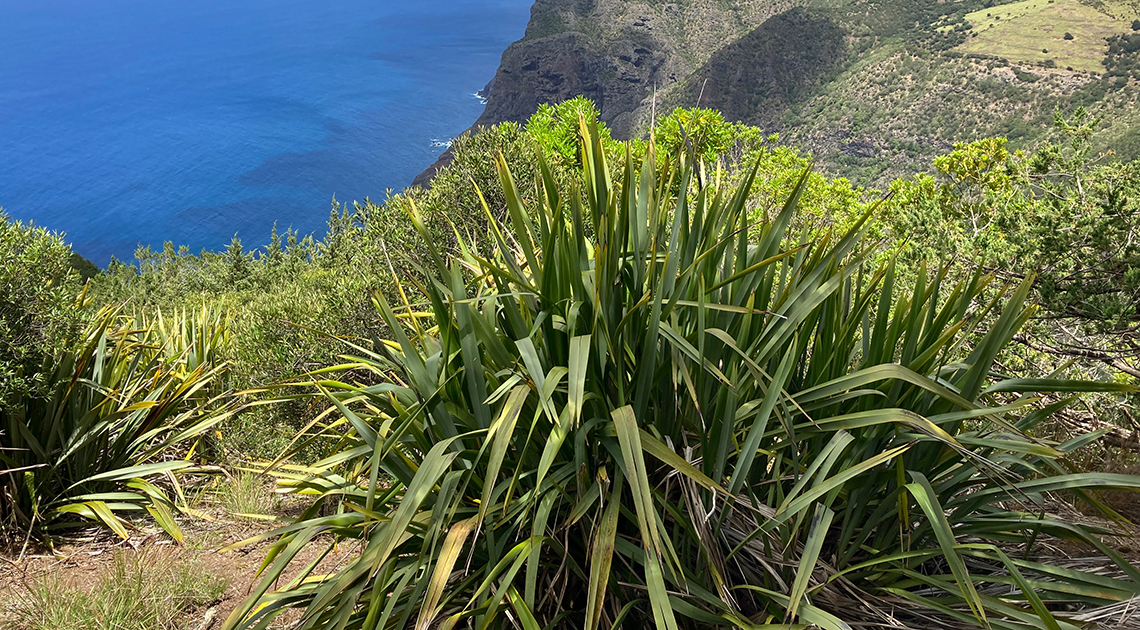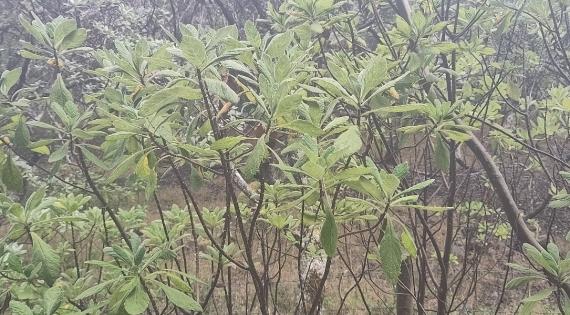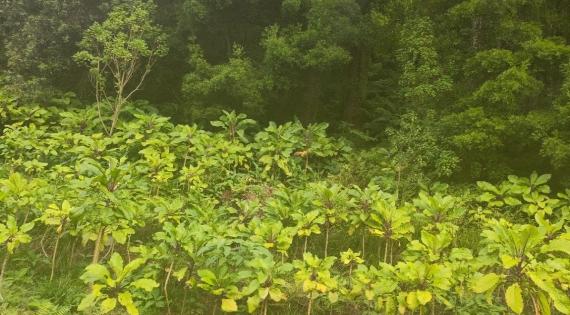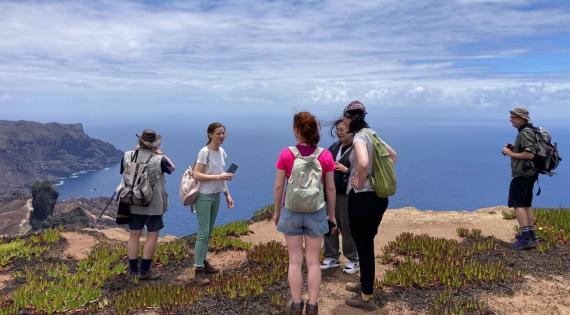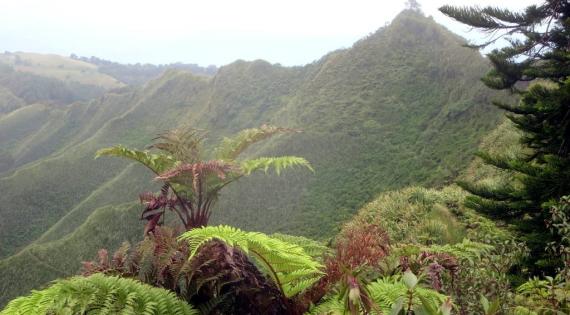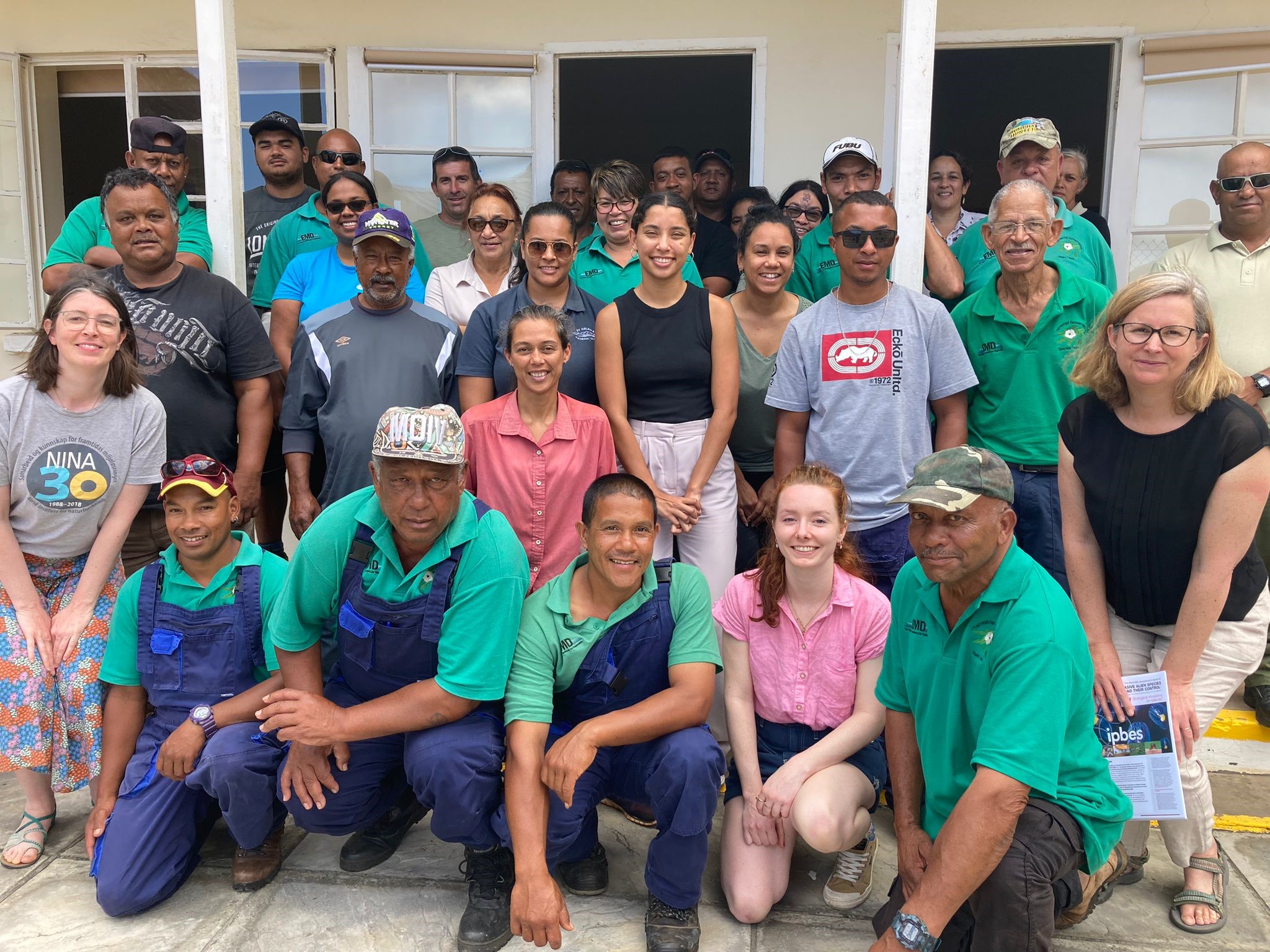UKCEH scientists co-organised a workshop with experts on St Helena as part of a project assessing risks posed by invasive non-native species in the UK Overseas Territories...
Invasive non-native species (INNS) pose a threat to the biodiversity and unique ecosystems of each of the UK Overseas Territories (UKOTs). Funded by Darwin Plus, we are currently working with each of the UKOTs to compile inventories of INNS. The project aims to enhance the availability of information on INNS and, in the long term, provide a template for a constantly evolving database of INNS, reviewing the threats they pose to each UKOT and considering the needs for monitoring and reporting.
This will allow experts to determine appropriate mitigation strategies to minimize the threat of INNS to people and nature.
Experts from a wide range of organisations attended our workshop in January 2024: St Helena Government (Environment, Natural Resources & Planning, Environmental Management, Project Management Office), St Helena National Trust, St Helena Research Institute, RSPB, students, and local farmers and land users.
The on-the-ground knowledge of the local experts was expansive. They provided a crucial insight into the most pressing concerns to the preservation of St Helena’s biodiversity, recognising the interconnections and dependencies of people and nature. There are many established non-native species widespread across St Helena and understanding the magnitude of their impacts to inform prioritisation of management is critical, particularly in the context of rapidly changing climates, to ultimately ensure the biodiversity can prosper.
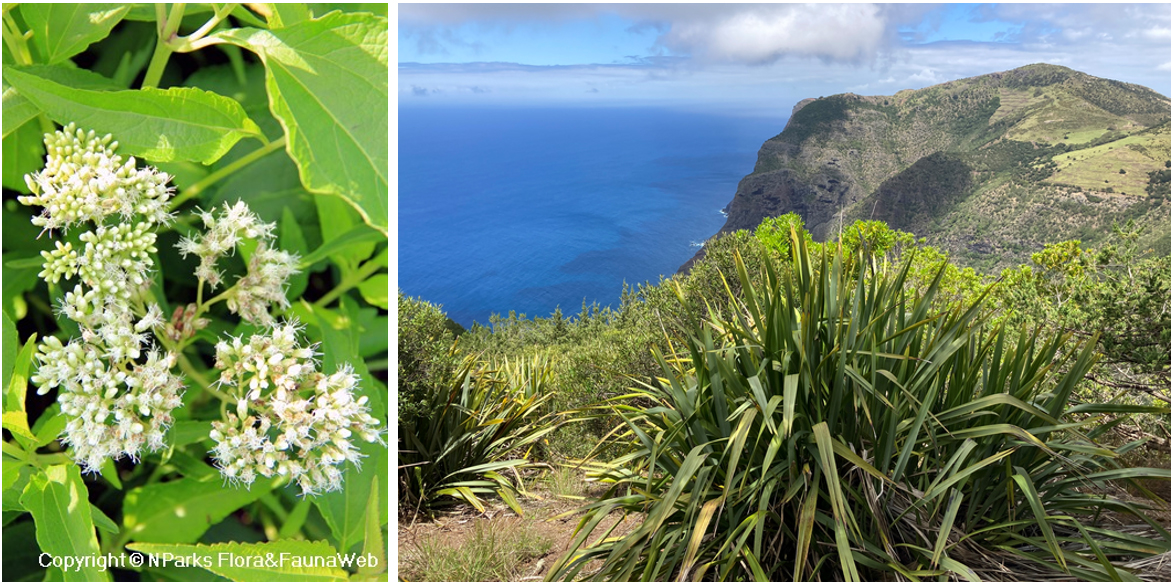
One INNS discussed extensively was Whiteweed (Austroeupatorium inulifolium). This species was originally introduced as an ornamental plant and has spread extensively across the island via wind and vector (human/vehicle/bird) dispersal. It dominates the vegetation in many areas of the island and is thought to increase the risk of soil erosion. Another species highlighted was the New Zealand flax (Phormium tenax). The Flax industry was integral to St Helena’s economy in the 1900s until the 1960s, when the use of synthetic fibres and high shipping cost made it unviable. Due to the historic areas being used as flax plantations, Flax is widespread across St Helena and competes with native and endemic plant species. Experts stressed the importance of regular surveying of the distribution of Whiteweed and Flax and targeted removal to prevent further spread.
Seeing the breadth of different landscapes on St Helena was a particular highlight of the visit, especially an insightful tour around the island with Julie Balchin, Biosecurity Officer for the St Helena Government, and hiking to Blue Point and Peak Dale. The landscapes were breath-taking and diverse, highlighting the range of habitats found on such a small expanse of land. In Peak Dale we walked through an area which had many of the endemic Gumwood (Commidendrum robustum) present and on the way back drove past an area abundant with She cabbage (Lachanodes arborea). These unique and beautiful endemic plants highlight the need to work towards reducing the threat of invasive non-native species.
